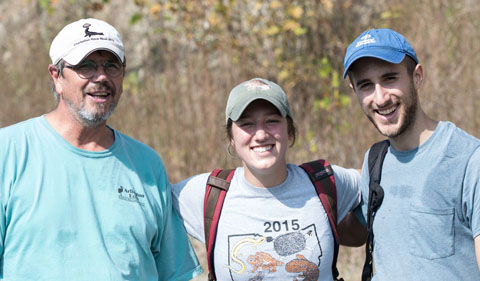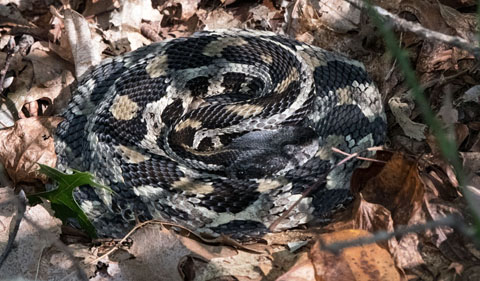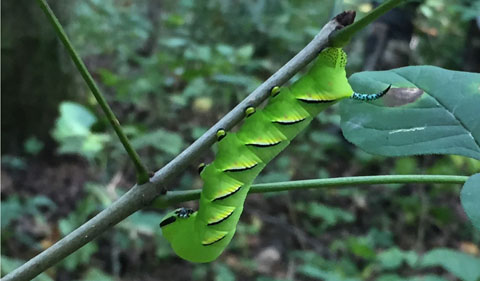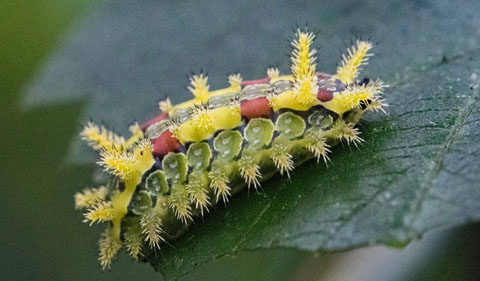
Willem Roosenburg, Alayna Tokash and David Jenkins
By Robert Frank
Dean of the College of Arts & Sciences
I recently had the opportunity to accompany Biology professor Willem Roosenberg and his graduate assistants Alayna Tokash and David Jenkins on a trip to monitor three Eastern Timber Rattlesnakes.
This team has been locating and recording the health of these snakes periodically over the past few months in order to better understand their behavior and biology. Eastern Timber Rattlesnakes are very rare in Ohio and according to the Ohio Department of Natural Resources, occur in only seven Ohio counties.
Timber rattlers are one of three venomous snakes found in Ohio, and they are the most dangerous due to their large size. Fortunately, these snakes typically are not aggressive.
The snakes we tracked had miniature, implanted radio transmitters that sent out a unique frequency so that we could identify each of the individuals. It did not take long to find the snakes at three different locations along a ridgeline. Each snake was nestled quietly under some brush. They were so well camouflaged that I had to stare at them for quite some time before I could see the snake. This is difficult to believe when you see a photo of a beautifully colored and patterned snake.

Eastern Timber Rattlesnake
The snakes made no effort to move as the four of us stood around them, keeping back a safe distance of four or five feet. Each of us wore protective leg gaiters in the event that a snake would become agitated and strike, but none of the snakes moved even slightly as we observed them.
The location of each snake was noted precisely, and its body temperature was measured using an infrared device that allow us check the body temperatures without getting too close or disturbing the snake. We found that the body temperatures of the snakes were on the low side due to the early morning air temperatures.
One of the main concerns that the team expressed during our search for the snakes was that one of the snakes occasionally moves onto the property of a family near the ridge. The property owner has made it clear that the snakes are in mortal danger if he sees them, endangered or not. This circumstance provided me with a good example of the conflicts that can arise between people who see snakes as a threat and those who see them as valuable members of the forest ecosystem.

Fawn moth caterpillar
As we were hiking out of the forest after we found the last snake, we came upon two of the fantastic caterpillars we have here in Southeastern Ohio, truly one of the caterpillar capitals of the world! One was the fawn moth caterpillar, and the other was the spiny oak moth caterpillar.

Spiny oak moth caterpillar
Seeing the snakes and the caterpillars reminded me yet again about all the natural wonders we have here in Southeastern Ohio and how lucky we are to be here.



















2 Comments